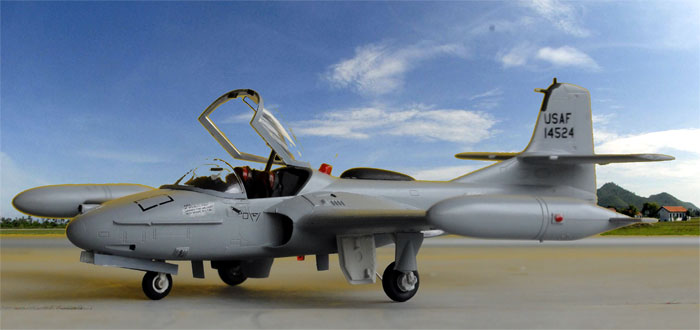[ page 1 ]
Academy model in 1/72 scale kit review and modelling report
page 2
page 3

photo made at Fairford in the 1990s showing a Portuguese A-37
The A-37 was one of the few military aircraft developed by the Cessna aircraft company, that mainly is known for its many private flying aircraft. Cessna developed in the fifties for the USAF a basic jet trainer, the T-37 "Tweety". It flew first in 1954 and many were manufactured and used for training in the USA.
As the Vietnam
war escalated mid sixties, their was a need for a low cost attack aircraft
for "Counter-In surgery". The T-37 seemed a good basis but would need to
carry more payload, get longer endurance and good airfield performance.
The A-37 was developed with a stronger wing with more pylons, large wingtip
tanks, a minigun fitted and new J85-J2/5 engines with much more thrust.
So as compared to the original T-37, gear doors and shape were bulged,
intake a bit enlarged and jet pipes are bit bigger; the tip tanks were
standard on the A-37.
But not earlier
than 1967, the first A-37A deployment was to Vietnam. It was known
as Dragonfly or better the "Super Tweet".
The A-37B was a version with a complete new strong airframe and a wing that could carry also 4 lower wing fuel tanks on pylons for longer endurance flying at low altitude over the jungle. The stronger J85-GE17 engine exhausts were a bit canted outwards and the control surfaces a bit modified. It also got armored ejection seats and improved systems. A refuelling probe on the nose could also be fitted. The landing gear was also beefed up.
Over 500 A-37B
were manufactured, many going also to the South Vietnam AF. After the American
run out of Vietnam even captured aircraft were used by the Vietcong.
In the seventies
and eighties dozens of aircraft were delivered to South American countries,
America's "back yard". They were used against left winged guerilla forces.
Trainer A-37B aircraft were sold in the seventies to South Korea and the
ROKAF Black Eagles demonstration team use these as well until 2007.
Even nowadays, some air forces use the A-37.
A 1/72 kit of the A-37 was first issued by Hasegawa in the seventies. At that time is was a good kit. I made a few of these in the old days.
But in 1999 Academy of Korea came with a much better 1/72 kit for a A-37B. During the years it appeared in various boxes and with different decals.
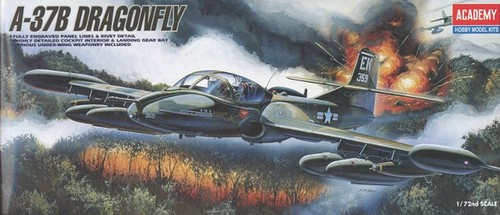

VIETNAM kit # FA163-1663 with 2 decal
schemes for a USAF 14th SOW vietnam camouflage scheme as used from Bien
Hoa 1970's and a Korean Air Force ROKAF scheme of the 8th FW 1996. Parts
are in light grey-green plastic.
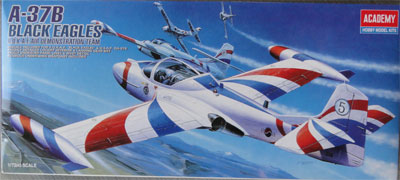
KOREA kit #FA176-1672 with decals
and a few parts for the Black Eagles demonstration team of the South Korean
AF. Parts are in white plastic.

The kit parts are nice with approx 70 parts in white or grey plastic and a two piece canopy. The cockpit is basic but adequate for the scale and a 3 piece seat. (If desired one could buy a PAVLA set for the seats). The panel lines are finely engraved. It has an optional tank boom and for the Korean demonstration aircraft a smoke tank inside the cockpit, replacing one seat.
Decals are adequate with also stencils.
They "silver" quickly so really use a gloss undercoat.
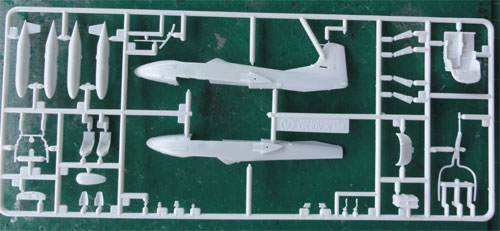
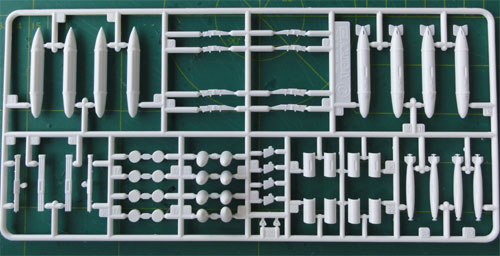
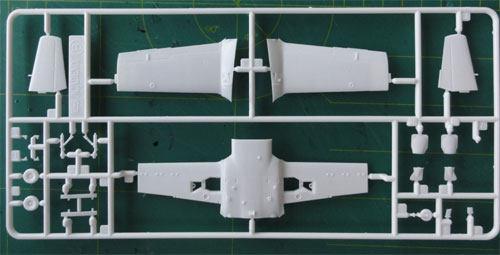
The kit is easy to assemble, starting
with the open cockpit, fuselage and than the wing. Cockpit details were
fitted later on.
What is a bit missing are the jet exhaust pipes. I simply painted the insides "black". Same applies for the intakes as there is no actual "tunnel".
Small parts are also nice with antennas and beacon lights. Stores in the kit are the many fuel tanks and SUU-14 dispenser, LAU-3 gun pods and mk.82 bombs with a bit thicks fins. The tip tanks are also there.
The fit is OK, I only need a bit filler at the lower sides at the wing-fuselage junction. Do not forget to add SUFFICIENT nose weight before closing up the fuselage. If you want various stores and pylons, do not forget to drill open the corresponding holes in the lower wing.
The cockpit tub was painted grey (using
Revell Aqua acrylic 77). The seat head rests red and grey seat structure.
Seat harnesses were made of tape strips.
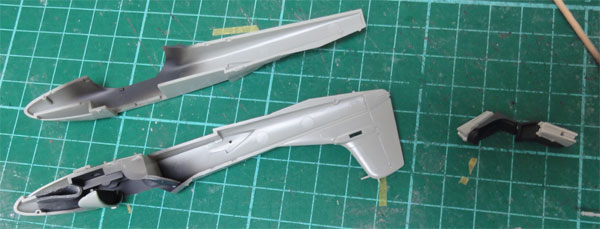
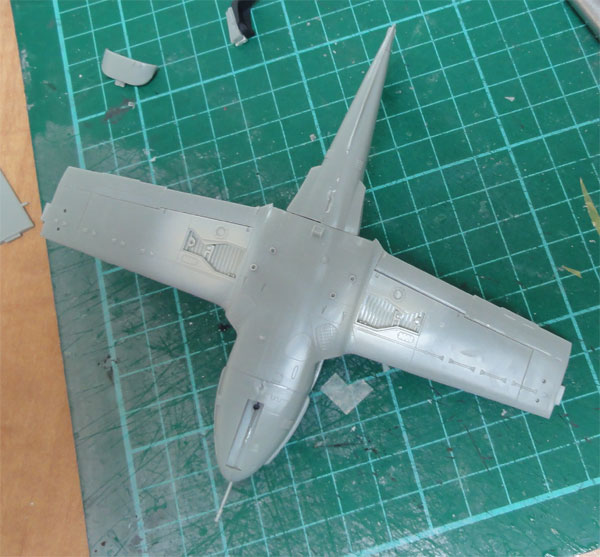
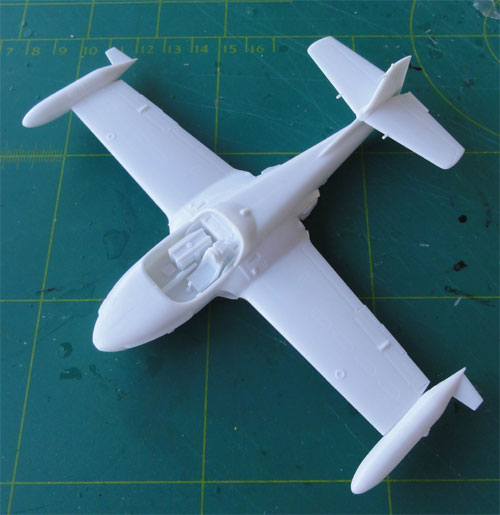
The "Korea" issued kit.
Make sure the undercarriage and "sit"
of the model is correct. There is little ground clearance.
Also check the actual antenna and
tank boom configuration of the particular aircraft desired. Sometimes,
a shorter tank boom is seen.
It was decided to make a bunch of
these Academy kits of not only as per kit of the USAF Korea but also various
World Air Forces using after market decals sets.
[1] KOREA Black Eagles
The Academy kit #FA176-1672 was made
as per instructions. So do not use the tank boom and top fairing A19 The
stores were not used as well. But do install the fluid tank # A5.
A base gloss white coat was airbrushed.
The decals were applied and the canopy was set in closed position.
Some paint was needed of blue and
red to close tiny "decal gaps" and around antennas. Anti-collision light
were painted and wire antennas added. The leading edge was hand painted
red.
In the end I still not enough nose
weight... so a metal wire was needed to keep the model nose down.
A nice little model of the A-37 RoKAF
Black Eagles




[ area: 100,363 sq.km | population: 51,7 million | capital: Seoul | GDP USD 35,000 per capita nominal ]
In the Second World War, Korean pilots were trained in China to fight against Japan. After the war, the South was occupied by the Allied forces and the North by the Soviets. When the South declared independence, the North invaded the South from June 1950. The Korea War was a fact and a severe war. Air jet fights were between North MiG-15's and US F-86's. Nearly, the North succeeded to control the whole Korea peninsula with their army. With large US and other Western "United Nations" support, the forces from the North were pushed back. A cease fire was agreed July 1953 lasting until today between North Korea and South Korea with a 4-kilometer demilitarized zone along the 38th parallel. Still there are tensions between South Korea and extreme communist North Korea of the Kim-Jong dinasty which has several nuclear bombs and develops longe range missiles.
The South Korea air force was set-up with American aid from 1948, flying with Pipers. The Republic of Korea Air Force (ROKAF) got additional light aircraft and later F-51's, the USA had military bases in the country. In the 1950s jets were delivered with some 140 F-86 Sabres, T-33 and F-86D. In the 1970s F-4 Phantoms were acquired and F-5's. Helicopters were flown as well as transports like the C-46 and C-123. In the mid seventies delivered were some 40 T-37 second hand jets from Brasil and some 28 ex-VNAF A-37's. Under the "Peace Bridge" program some 40 F-16C/D were delivered but also over 50 additional F-4D/ F-4E/ RF-4C. For training the T-38 was leased. Local industry such as Korea Aircraft Industries (KAI) did license production with the "K.." designation such as KF-5E/F and later KF-16 of which over 120 F-16C/D put into service. F-15 Eagles were also acquired. KAI designed the KT-1 trainer and even Russia delivered from 2004 some 23 IL-103 (known as the T-103). The newest trainer jet is the T-50 lead in fighter trainer. A new fighter is sought.
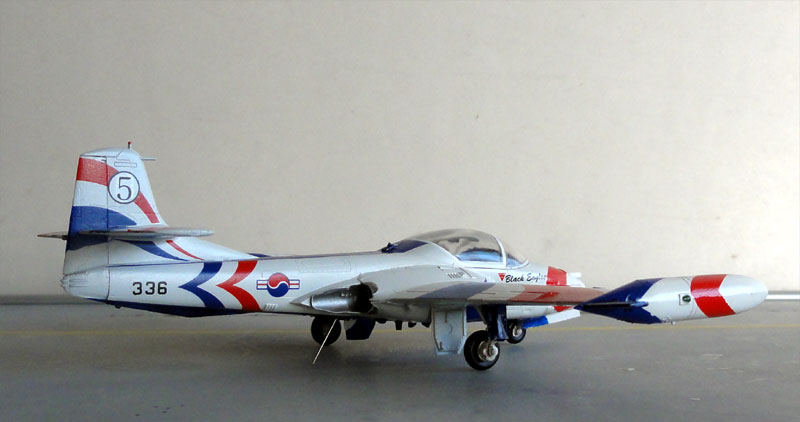

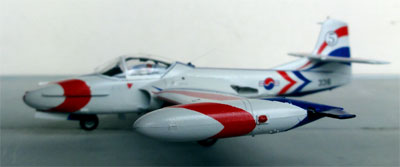
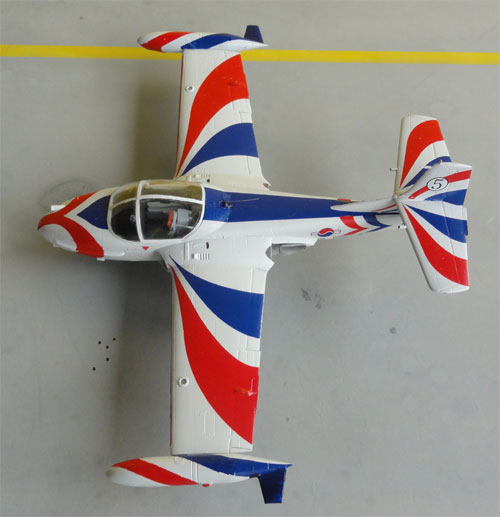
.
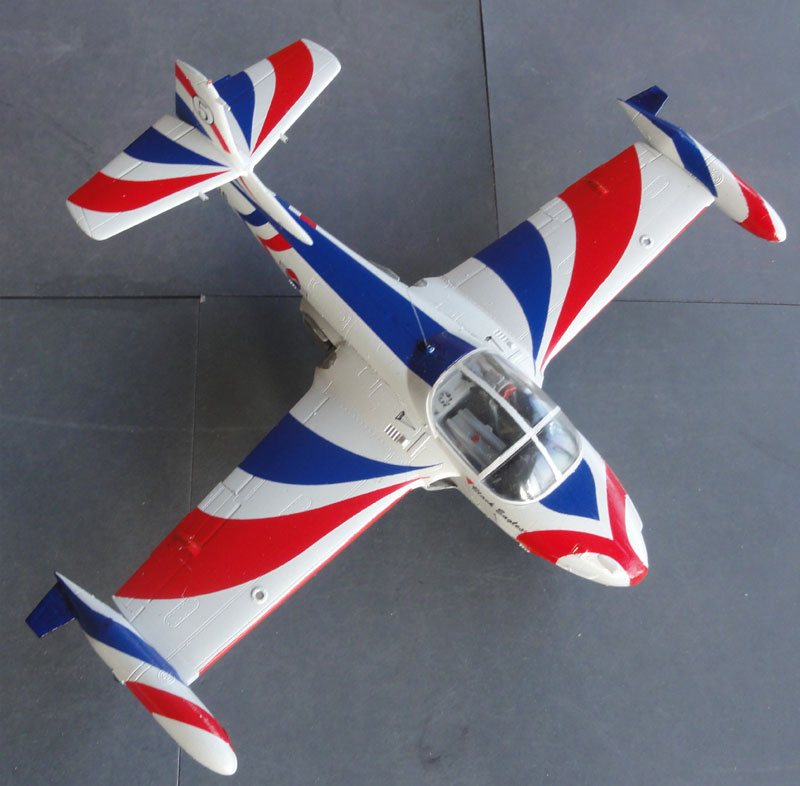
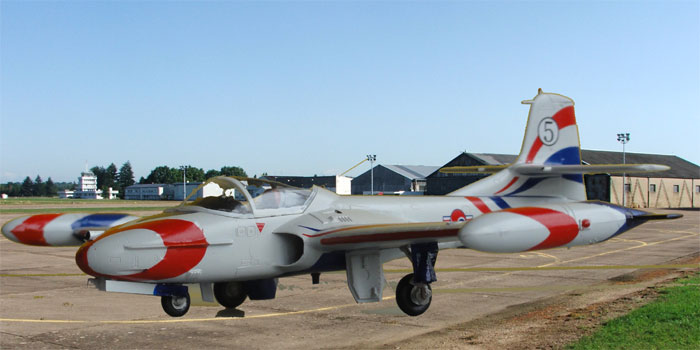
My friend Peter
saw a couple of preserved Black Eagles aircraft on poles in South Korea,
at Sacheon near KAI headquarters:
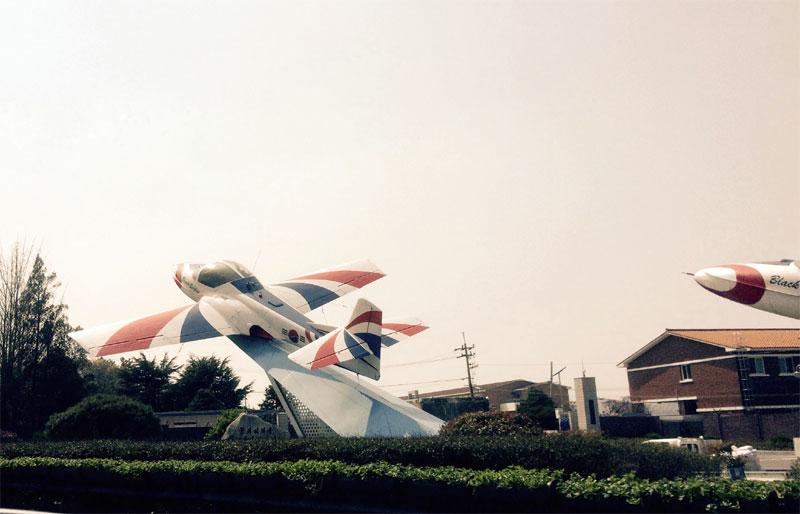
Another ROKAF A-37 model is seen at page 3...
USAF Bien Hoa AB Vietnam
The normal standard Vietnam scheme has the paints Fed.Std 34079 green, 34102 green, 30219 tan and lower 36622 light grey. But this model was made with a special experimental blue-grey USAF Vietnam scheme. From my modelling Bas I got a number of decals of Wolfpack #72-205.
The A-37 is for a 604th ACS of the 3rd TFW at Bien Hoa 1967. It was part of the "Combat Dragon" program. It was to developed the close support type of missions. Based on this, the A-37B was also developed. So this particular model should be a A-37A, so may be I should have used an old Hasegawa kit. But, I think the external differences are not that big between a A-37A and A-37B. The A-37B canted exhaust pipes are missing anyway in this kit as well.... and the Academy kit is much finer. I did not use the lower later A-37B wing fuel tanks and kept it "clean". The tank boom was not yet there so not assembled.
It has a pale blue scheme of FS 25630.
It was an experiment to see how enemy ground fire would be directed. But
they were also difficult to see for the USAF crews and the Forward Air
Controller (FAC). Later, the standard USAF camo scheme was used.
I had no good pale blue match, so
simply used GUNZE SANGYO #H307 acrylic.
The canopy was tilted upwards and
a couple of tiny mirrors installed made from aluminum foil on the edge.
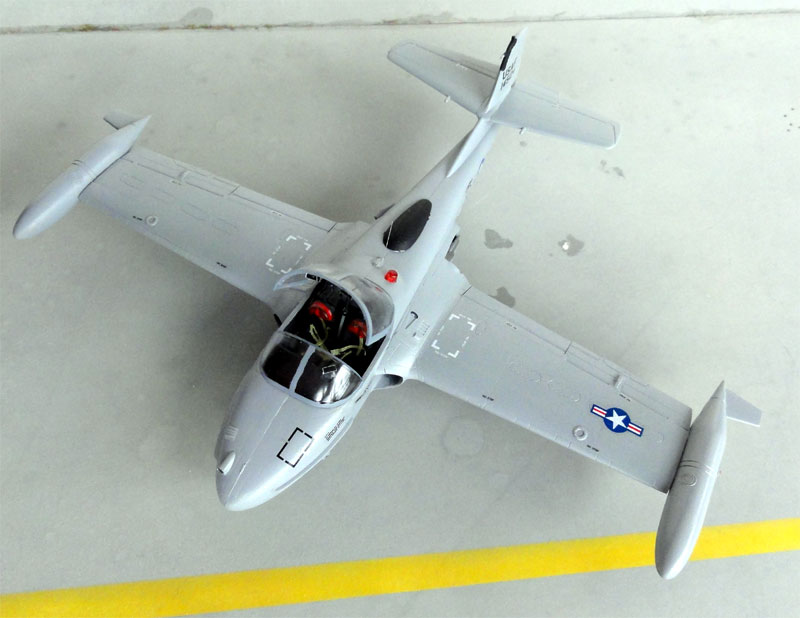
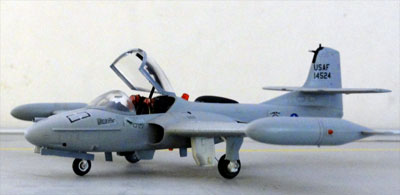

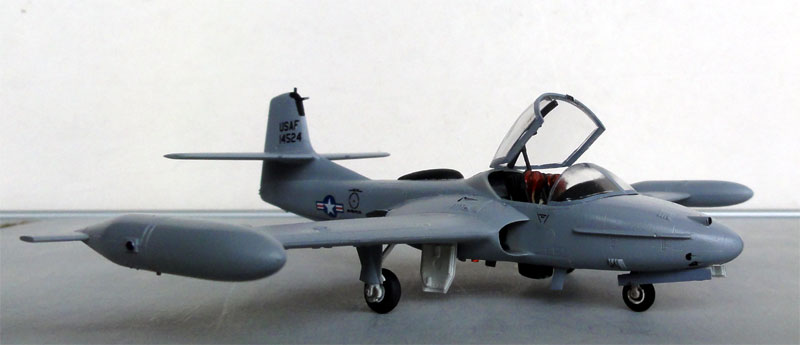
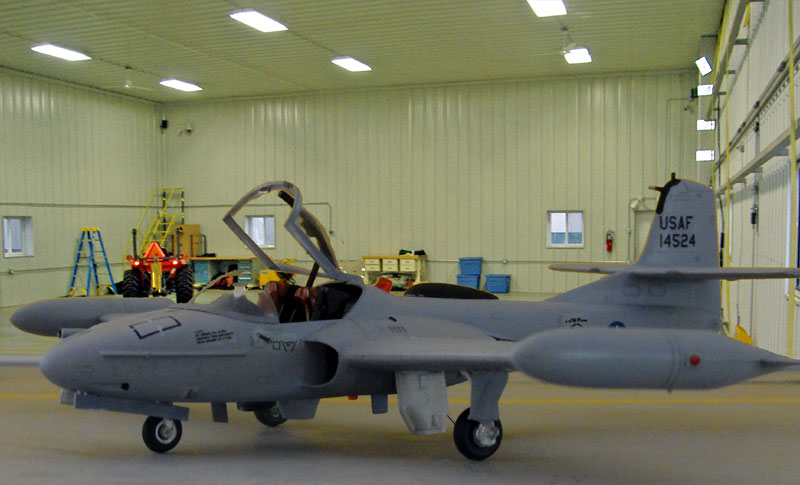
On to next [ Page 2... ]
Back to models.......
..
References
Squadron Signal publications:
- A-37 In Action #114
- Tactical Air Command #6012
- Air War over Southeast Asia #6037
- VNAF #6046

(c) Copyright Meindert "designer"/ All rights reserved. Your comments are welcomed by webmaster
Created June 19, 2015
